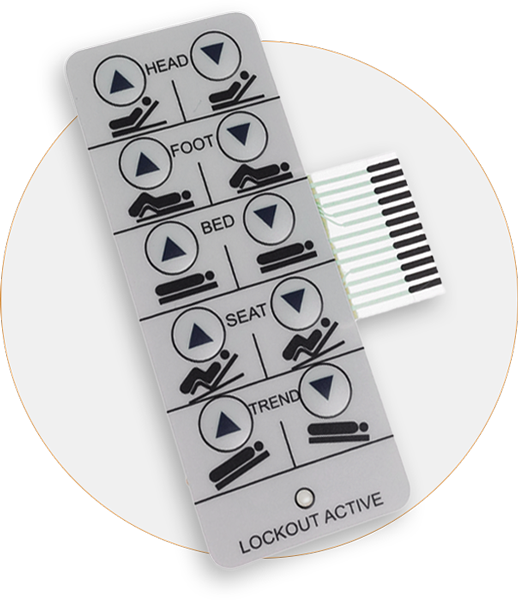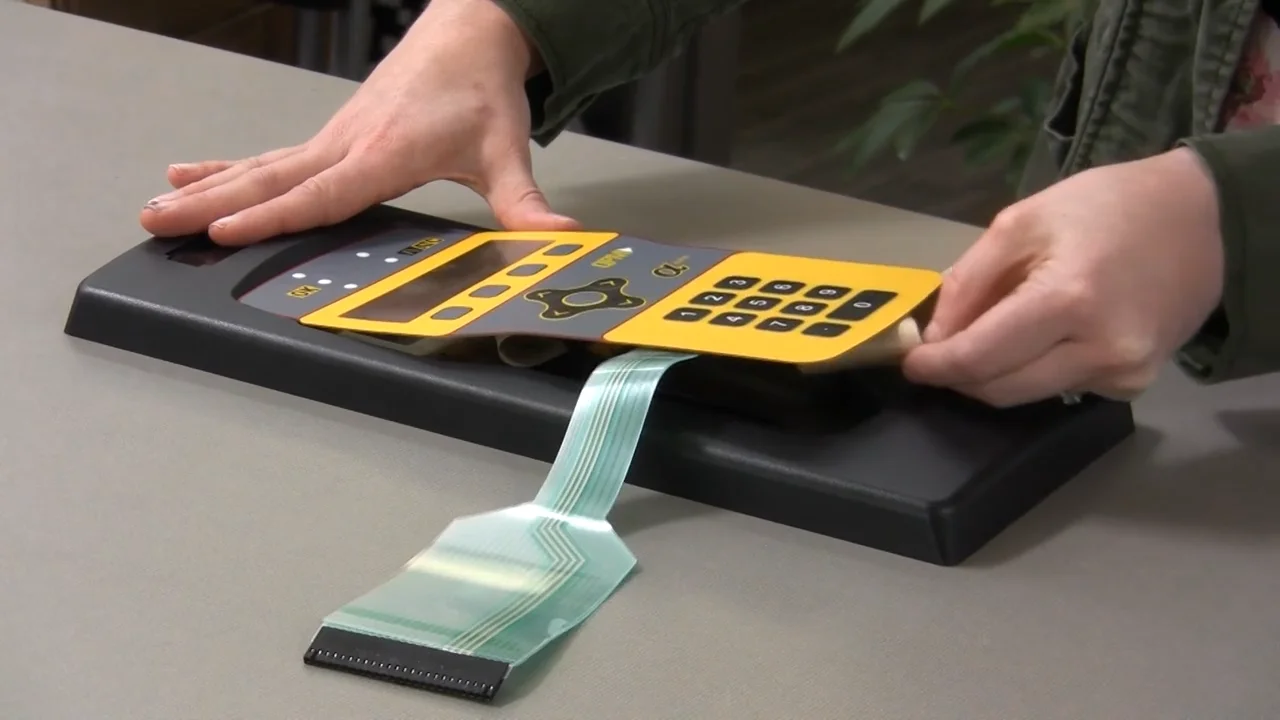Just How to Make Certain Long Life and Integrity with a High-Quality Membrane Switch
Just How to Make Certain Long Life and Integrity with a High-Quality Membrane Switch
Blog Article
How Membrane Changes Contribute to the Durability of Electronic Control Panels
Membrane switches play a vital role in boosting the sturdiness of electronic control panels, primarily through their multi-layered construction which provides reliable security versus ecological variables such as wetness and dirt. The lack of moving components dramatically decreases the likelihood of mechanical failures, making membrane layer switches over ideal for requiring applications.
Definition of Membrane Switches

Membrane switches are created to be thin and lightweight, making them ideal for applications where space is restricted. They can be produced in numerous forms, dimensions, and colors, using versatility in design that meets visual and practical requirements. Furthermore, membrane layer buttons can integrate different technologies, such as tactile responses and LED indications, boosting user experience.
As a result of their building and construction, membrane layer buttons are often resistant to dust, dampness, and general wear, adding to their durability in demanding settings. Their seamless layout not only helps with simple cleaning but also minimizes the threat of mechanical failing, making them a recommended selection for manufacturers seeking trustworthy user interfaces in their electronic control board.
Protection Versus Ecological Variables
The layout of membrane layer changes inherently provides a degree of defense against different ecological variables, which is essential for preserving capability in difficult problems - Membrane Switch. These switches are commonly constructed with layers of versatile products that secure inner elements from moisture, dirt, and pollutants. By encapsulating the circuitry, membrane layer changes decrease the risk of brief circuits and corrosion, which can dramatically harm efficiency
Additionally, using durable adhesives and sealers during manufacturing improves their resistance to ecological obstacles. Membrane layer switches can endure exposure to chemicals and solvents, making them appropriate for sectors such as food handling and medical care, where health and cleanliness are vital. Their smooth surface area style additionally avoids the buildup of dirt and microorganisms, promoting much easier cleansing and upkeep.
Temperature changes are one more environmental worry, and membrane switches are crafted to function properly across a variety of temperature levels (Membrane Switch). This flexibility guarantees that control panels stay operational in numerous setups, from industrial environments to consumer electronic devices
Influence on User Interaction
Individual communication with electronic control panels is substantially influenced by the style and capability of membrane layer buttons. These switches offer a tactile user interface that boosts the general individual experience, permitting for user-friendly navigation and control. Their receptive nature guarantees that individuals get immediate responses upon activation, which is critical for jobs requiring accuracy and effectiveness.
Furthermore, the smooth surface area of membrane layer switches promotes simple cleaning and upkeep, promoting customer confidence in the integrity of the interface. This cleanliness is specifically crucial in settings where hygiene is critical, such as clinical or food handling setups. Furthermore, the compact and lightweight layout of membrane switches adds to the aesthetic allure of control board, motivating customer involvement via a modern-day and sleek look.
Additionally, the combination of visual aspects, such as printed symbols and backlighting, assists users swiftly recognize functions, minimizing the finding out curve connected with brand-new devices. Because of this, customers can operate tools better, leading to enhanced efficiency and contentment. In recap, membrane switches play a pivotal role in improving user interaction by integrating performance, looks, and simplicity of usage, eventually resulting in boosted functional effectiveness.
Design Flexibility and Modification
Layout flexibility and customization are essential facets of membrane buttons, allowing makers to customize digital control board to particular applications and individual needs. This versatility enables the integration of various design aspects, such as colors, graphics, and appearances, which can boost the visual charm and user involvement of the control board.
Membrane buttons can be customized in dimension and shape, suiting a large range of tools and applications, from commercial equipment to customer electronics. This convenience makes certain that suppliers can create instinctive user interfaces that straighten with customer expectations and functional requirements. Furthermore, the ability to incorporate special functions such as backlighting or responsive feedback further improves functionality, enabling a visit this site much more click to read interactive experience.
Moreover, the manufacturing procedure for membrane switches over sustains the fast prototyping of layouts, allowing suppliers to iterate and refine their principles promptly. This capability not only increases the development timeline however also makes sure that the final item meets certain functional and visual standards.

Cost-Effectiveness and Durability
Cost-effectiveness and long life are significant advantages of membrane buttons, making them an attractive option for suppliers and end-users alike. These buttons are commonly cheaper to generate than standard mechanical switches, largely due to their simplified production procedures and the decreased number of elements needed. This price benefit extends not just to first manufacturing however likewise to long-term operational expenditures, as membrane layer switches usually require much less maintenance and have a lower failing price.
Furthermore, the longevity of membrane switches over contributes to their general worth. Built from durable products, they are immune to ecological aspects such as moisture, dust, and chemicals, which can result in premature wear in various other switch kinds. The absence of relocating components decreases mechanical failing, permitting membrane changes to keep capability over Get More Info prolonged periods.
This toughness is particularly beneficial in applications requiring constant performance under demanding conditions, such as medical gadgets and commercial equipment. Eventually, the mix of cost-effectiveness and long life makes membrane switches a financially practical option for suppliers, giving reputable remedies that withstand the test of time while optimizing budgetary considerations.
Verdict
In final thought, membrane buttons significantly improve the durability of electronic control panels through their durable construction and protective features. By successfully shielding wiring from environmental hazards and lessening the risk of mechanical failure, these buttons make certain consistent efficiency sought after applications. The smooth layout advertises hygiene and convenience of upkeep, while personalization alternatives allow customized solutions for different requirements. On the whole, membrane switches over stand for a trusted and cost-effective option for improving the long life and capability of electronic control systems.
Report this page